Objective: to generate cognitive interest in outer space, fundamental concepts about space among elementary school students.
– To reinforce knowledge about the solar system.
Space, star, constellation, galaxy, Milky Way, planet, Earth, Mars, Sun, Neptune, Saturn, Venus, Uranus, Jupiter, Mercury, comet, rocket, astronaut, astronomer, spacesuit, telescope, fly, master.
Integration of educational areas:
- Cognitive development;
- Speech development;
- Social and communicative development;
- Physical development
Children form a circle and perform movements according to the text:
Hello, blue sky, (stretch their hands up)
Hello, golden sun, (outline the circle with their hands)
Hello, light breeze, (shake hands above head)
Hello, dear little flower, (please have a seat)
Greetings, good morning, greetings to the day. (please stand up)
We are not lazy to greet each other. (let’s take each other’s hands)
– Guys, today on my way to work I stumbled upon something interesting. Are you curious to know what it is exactly? (Yes). Then take a look, what is it? (An asterisk)
– How do you think it ended up on the road? (Children answer)
– Do you want to find out where our little star lived before? (Children’s answers)
1. Introduction to the fascinating world of galaxies.
Since ancient times, the mesmerizing night sky has captivated humans. They spent countless hours gazing up at the celestial expanse. People were mesmerized by the sheer multitude of stars. (Slide 1).
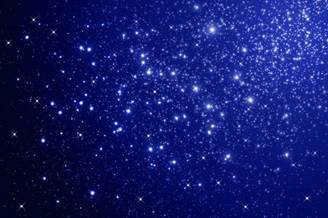
Stars captivate with their unfathomable depth and enigma. At times, a multitude of stars can be observed in the nocturnal sky. A colossal assemblage of star clusters, interstellar gas, and dust is referred to as a galaxy.
Every entity within a galaxy undergoes movement relative to a shared focal point.
There exist numerous galaxies in the outer space. Galaxies manifest themselves in various forms. Diminutive galaxies contain less than a billion stars.
Galaxies also exhibit diversity in terms of shape. Galaxies can be categorized into spiral, elliptical, and irregular formations.
Spiral galaxies are characterized by a flat disk featuring a bulging core and spiral arms. Within the disk, planets, stars, dust, and gas orbit around the core. Spiral galaxies resemble spherical spinning fireworks. (Slide 2).
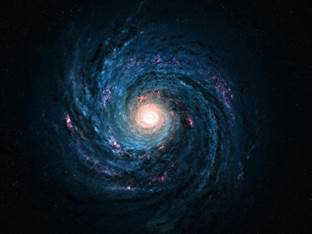
Elliptical galaxies derive their name from their elliptical shape. Similar to spiral galaxies, cosmic objects orbit a central point in elliptical galaxies, but their movements are characterized by greater chaos. (Slide 3).
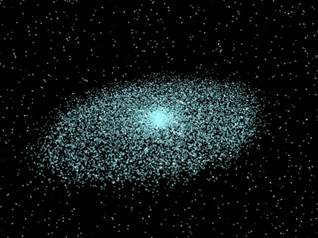

The shapes of irregular galaxies are not constant and distinct. This is because they are often affected by the gravitational pull of other galaxies. (Slide 4).
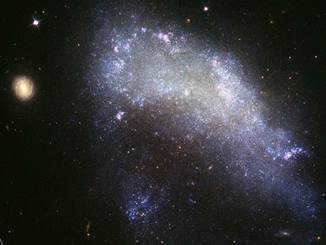
– And now we will venture into the vastness of space to admire the celestial abode of our esteemed visitor and pay a visit to our friends from the stars.
– How will we travel? (On a rocket) (Slide 5)
What is another term for a rocket? (Spaceship). What is the name of the facility where spaceships take off from? (Spaceport).
– Put on your spacesuits and let’s embark on this journey!
Not today, but tomorrow we will (children marching in place)
We will transform into astronauts. (hands mimicking the shape of a spacesuit helmet)
We will soar into the depths of space (Straight arms representing the tip of a rocket)
Up, up! (standing on their toes)
Ignition, activate the thrusters! (whirring)
Here we find ourselves in outer space. Take a moment to observe to which galaxy does our very own galaxy belong? (Slide 6)

What is the reason behind the name? (Responses from children)
The name “Milky Way” has its origins in the ancient Greek legends about the gods of Olympus. According to one of these legends, the goddess Hera once fed milk to Hercules, and some of the milk spilled across the sky, forming a milky pathway that people came to know as the Milky Way.
In ancient times, people believed that the Milky Way was a celestial pathway for angels to ascend to the heavens.
In reality, if you gaze into the center of the galaxy, where there is a large cluster of stars, you will witness a vast conglomeration of stars merging into a nebulous cloud. This creates a luminous band of light that stretches across the entire sky, known as the Milky Way.
The Milky Way is the abode of 400 billion stars and countless planets, comets, and asteroids. It is possible that our guest starfish also resided here.
4. Hey, did you know that the solar system is actually located on the outskirts of the galaxy, not in the center? (Slide 8)
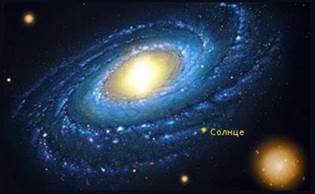
Recall the celestial bodies that constitute the solar system.
Firstly, we have Mercury, secondly, Venus,
Next, we have Jupiter, followed by Saturn,
Then comes Uranus, and finally, Neptune.
Let’s head to the space station and construct a simulation of the solar system.
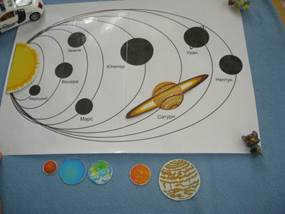
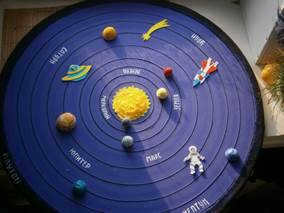
– Great job! We have a wonderful solar system, with the magnificent sun at its center, and the planets gracefully revolving around it. Can anyone tell me the name of our beloved planet? And do you know how far it is from our radiant sun? (Responses from the children.)
– My friends, let’s have a little discussion. Is the sun considered a planet? And what sets a planet apart from a star?
– Absolutely right! Stars are radiant sources of light, whereas planets do not emit light. Our sun, on the other hand, shines brightly, providing us with warmth and illumination on our beautiful Earth. Without the sun, life as we know it wouldn’t be possible. In addition to our sun, there are countless other stars scattered throughout our vast galaxy. However, they are located at great distances from our planet, appearing to us as tiny, twinkling points of light. But are they truly small? (Responses from the children.)
After exploring our star, it’s time for us to return home, to our planet … (Earth) (Slide 9).
– The sun shines at night and the moon shines during the day
– The stars are the light bulbs in the sky.
– A spaceship takes off from the airfield.
– An astronaut takes flight into space wearing a robe.
V. Conclusion Surprise moment.
– Great job, everyone! Did you enjoy the lesson?
– What did you like the most?
– What new things did you learn during the lesson?
I enjoyed the way you answered the questions and completed the tasks. And as a gift from our Milky Way galaxy, here is some milk chocolate in the shape of stars.

In order to comprehend this, it is necessary for us to acquire an understanding of the functioning of the universe that surrounds us. Our planet, Earth, is one among several that orbits a star known as the Sun. However, the Sun is not solitary in the vast expanse of outer space. It has companions – other stars.
Ancient Greek mythology is replete with tales of the deities residing on Mount Olympus. One such tale recounts that the goddess Hera once nourished Hercules with her milk, and a portion of it spilled across the heavens, forming a luminous trail that mankind named the Milky Way.
Text authored by: Lev Poyasnikin
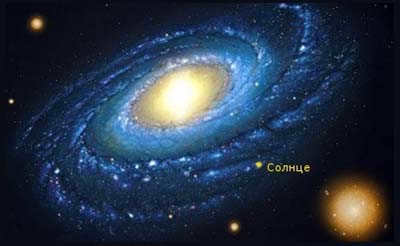
This post requires a password for access. Please enter the correct password to view the comments.
Greetings, inquisitive adventurers. If you’ve stumbled upon this article, it must be for a reason – perhaps you have an interest in the field of astrology. This captivating science is constantly evolving, unveiling new frontiers and avenues of research.
In this piece, we will delve into the wondrous phenomenon known as the Milky Way. How does our world appear to us? Prepare to discover fascinating insights into the awe-inspiring beauty of the natural world.
Definition
The Milky Way is a cosmic assemblage consisting of stars, planets, asteroids, and the sun. Remarkably, you and I are currently situated within the confines of the Milky Way. Astronomers are diligently examining all aspects of this enigmatic entity. What are the characteristics of this perplexing phenomenon?
Envision, if you will, a galaxy with the ability to absorb smaller ones. Even constellations in close proximity to the Milky Way are gradually drawn into its gravitational embrace, ultimately becoming integral components of this vast structure.
Fascinatingly, at this very moment, a diminutive galaxy is being pulled into the Milky Way, destined to become assimilated. Regrettably, it will not always have the opportunity to interact with smaller galaxies. There exists the possibility of an encounter with a larger celestial body within our universe, resulting in the eventual consumption of the Milky Way itself.
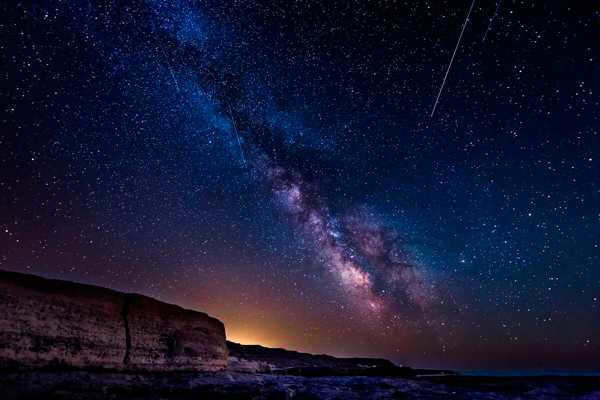
Understanding the Milky Way
With the emergence of advanced technologies, scientists have dedicated considerable effort to studying the Milky Way, resulting in a wealth of knowledge about this galaxy. Positioned at the core of the Milky Way are numerous stars, with some scientists theorizing the presence of a black hole at its center, which unfortunately remains relatively unexplored.
Extending from the core is the galactic disk, composed of gas, dust, and stars that illuminate our night sky, as well as the solar system.
As previously mentioned, the Milky Way is influenced by the presence of nearby dwarf galaxies, resulting in a relatively flat appearance when viewed from the side. This is due to the movement of the galactic arms around the disk.
Size
The size of the Milky Way is not precisely defined due to its immense proportions. There has been much debate among astronomers and experts on this matter. Initially, it was determined that the galaxy had a diameter of 100,000 thousand light years and a width of 1,000 light years.
However, with the advancement of technology and improved scientific instruments, another measurement of the galaxy was conducted. This took place several years ago and scientists concluded that the galaxy could be much larger than previously believed, potentially even twice the size.
In the intervening years, scientific progress has continued and as of 2020, a new measurement of the galaxy has been made. While these figures have yet to be fully confirmed, the study’s results indicate that the Milky Way has a diameter of 1,900,000 light years.
Guessing the number of stars in the entire galaxy is as difficult as trying to guess this rephrased text. However, the numbers are present, and they amount to a staggering 400 billion stars.
But that’s not all because there are also brown dwarfs. Unfortunately, they are too small to be considered stars due to their lack of brightness. Nevertheless, they also make up a significant number, ranging from 25 to 110 billion.
Scientists are continuously developing new technologies to study the Milky Way’s disk in detail and with accuracy. However, certain information about it has already been discovered.
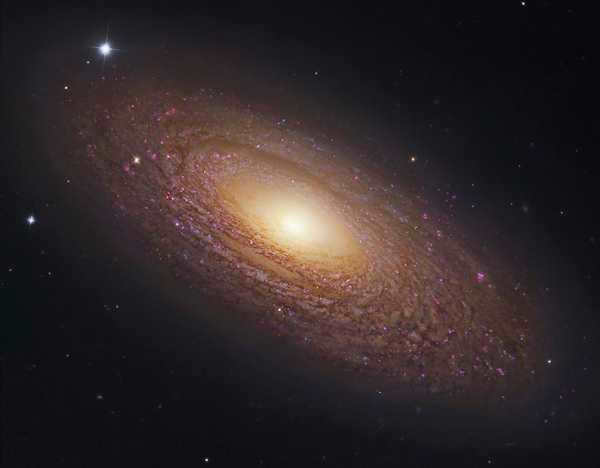
In 2005, Lyman Spitzer provided evidence through his telescope that the Milky Way is categorized as a spiral galaxy. The majority of young stars are located in the flat disk, while older stars become more visible as you move further away.
Now, let’s examine the nucleus more closely. Scientists hypothesize that it contains a black hole, which remains partially unexplored. Surrounding the black hole are stars that emit light, causing the core to appear bright. Following the core is the bridge.
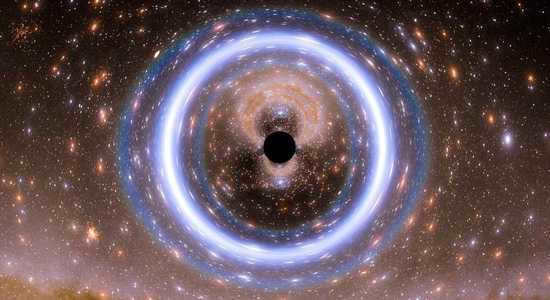
It’s not just empty space, it’s the home of the crimson stars. These stars have been in existence for billions of years, thus emitting very faint light. Recently, a new black hole was discovered at a distance of 200 light years from the center.
Furthermore, 12 additional systems have been identified where black holes could possibly exist. Unfortunately, these celestial objects have not been extensively researched, leaving us with mere speculation.
The Halo, simply put, is a spherical structure that surrounds the Milky Way’s disk. It primarily comprises ancient stars and clusters that have been in existence for thousands of years.
Based on studies of several extremely old objects, scientists have hypothesized that the Halo formed approximately 12 billion years ago.
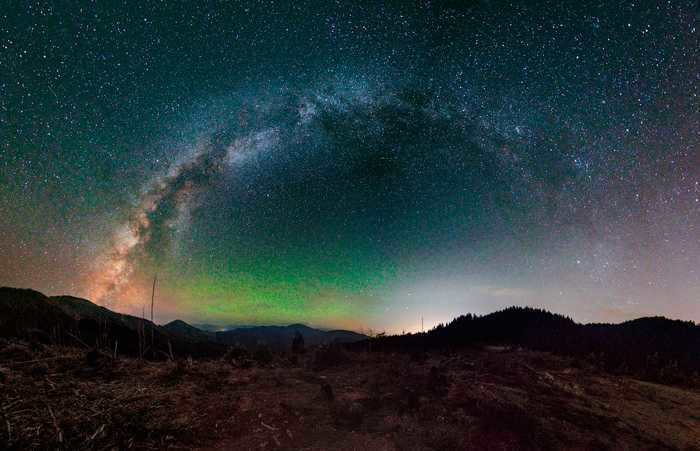
Incidentally, all the celestial bodies within the halo are in orbit. This phenomenon can be attributed to the influence of the disk on the halo. The halo is considered to be a fully developed structure. There are no conditions for the formation of new stars here, which is why they do not appear. Unlike the disk, the halo lacks dust and gases from which new stars are formed.
Where can we locate it?
In recent times, scholars made a collective decision to embark on an expedition to determine the exact whereabouts of the Milky Way, our very own galaxy, and consequently, our own existence. Our galaxy forms a constituent part of a vast expanse known as the Laniacea region.
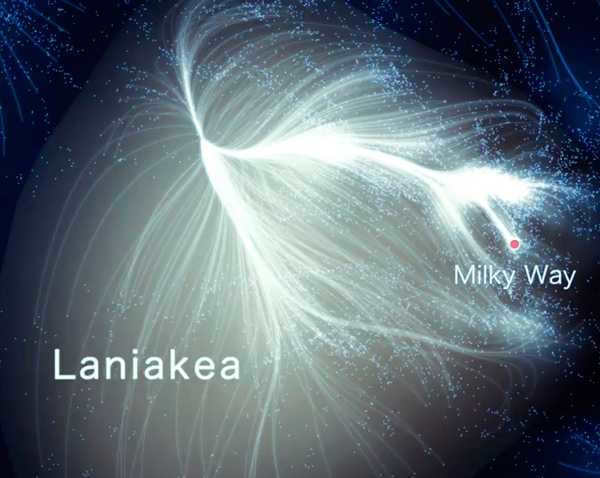
This region contains numerous clusters of galaxies spread over a vast area, although it is not the largest in the entire universe. There exist larger regions; however, Laniakea possesses the greatest mass. The motion within Laniakea is currently posing a challenge for scientists to investigate. Nonetheless, it is believed that our Milky Way extends deeply into all of these clusters.
Undoubtedly, the Milky Way is an extraordinary entity, boasting an incomprehensible size and astonishing facts. Professors and scientists have only just begun to explore this phenomenon, which harbors life—us, you and me.
In order to unravel all the mysteries concealed within the Milky Way and our galaxy, it is essential to accumulate significant experience, employ cutting-edge technologies, and possess an insatiable thirst for knowledge about our world.
It will require numerous additional decades for scientists in the field of natural sciences to comprehend the intricate workings of the universe, the direction in which everything is evolving and progressing. Do you believe that a single individual possesses the power to alter the trajectory of an entire galaxy? Or can we merely observe it?
Investigate and marvel at it? Nevertheless, astronomy is an incredibly fascinating scientific discipline. It contains a wealth of knowledge… Information regarding our cosmos should be accessible not only to adults but also to children. However, I am convinced that there is certainly a keen interest in it.
In conclusion
We trust that our article has provided you with valuable insights as we have included a wealth of important information. Summarizing it concisely would be impossible, but by reading this article, you have gained a great deal of knowledge about our galaxy and the place we call home.
I myself was incredibly intrigued by the opportunity to discover new information, and I eagerly await your feedback. If you found it enjoyable, consider subscribing to our blog, where you will continue to learn about many more fascinating and practical subjects.
Remember to share this article with your friends and acquaintances so they too can benefit from the useful information it provides. With that, I bid you farewell and wish you all the best in your journey through life.

All the information about galaxies for kids of any age: a description with pictures, what a galaxy is, the different types, the Milky Way, how galaxies form and merge in space.
Parents or schools can begin explaining to children that galaxies are enormous cosmic systems that are filled with dust, gas, and stars. It’s important for children to understand that it’s impossible to calculate the exact number because there could be 100 billion of them in the observable universe alone. Some galaxies are similar in structure to our Milky Way, while others are completely different.
It’s crucial to explain to children that small galaxies are those with less than a billion stars. In our galaxy, the Sun is just one out of 100 billion stars.
Explanation for children: Different Kinds of Galaxies
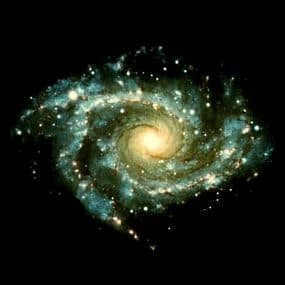
Spiral galaxies, such as the Milky Way, exhibit a unique structure consisting of a flat disk with a bulging center and spiral arms. Within the disk, various celestial bodies, including planets, stars, dust, and gas, orbit around the central region.
Despite our inability to perceive it, the rotation speed of spiral galaxies can reach hundreds of kilometers per second. This rapid rotation gives rise to the distinctive spiral pattern, resembling a cosmic whirlpool. Some spiral galaxies, like the Sombrero Galaxy, possess even more pronounced curvature.
The central bulge of spiral galaxies typically contains older stars, while new stars continually form within the spiral arms. Surrounding the disks of these galaxies is a halo, which intrigues scientists due to its potential abundance of enigmatic dark matter.
Parents or educators in schools can teach young children that elliptical galaxies are named after their shape, which is typically elongated and resembles a cigar. These galaxies contain a large number of old stars, up to a trillion, but not much interstellar matter like dust. The stars in elliptical galaxies orbit around the center, similar to spiral galaxies, but their movement is more chaotic and random. It’s important to explain to children that very few new stars are formed in this type of galaxy.
Giant elliptical galaxies are the most well-known in the Universe and can span up to 2 million light-years in length. However, there are also smaller versions called dwarf elliptical galaxies.
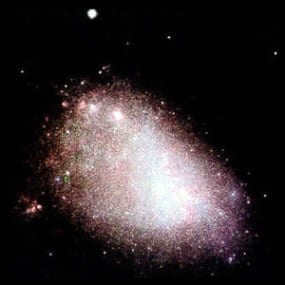

Irregular galaxies consist of those that do not fit into the aforementioned species. They appear distorted and lack a consistent, defined shape. This is primarily due to the gravitational pull exerted on them by other galaxies.
Understanding Galactic Mergers for Kids
Out in space, you can discover individual galaxies or galaxies that come together in pairs. However, more often than not, they assemble into groups known as clusters or superclusters. When this happens, these galaxies experience gravitational interaction or even merge with each other. As a result, gases start to accumulate at the center of the merged galaxy, sometimes leading to the formation of new stars at an accelerated pace.
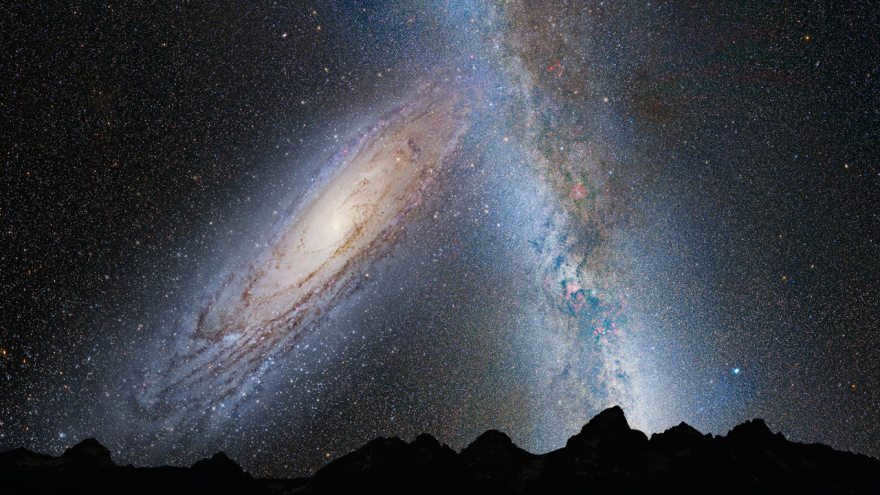

In 3.75 billion years, the view of the sky above us will resemble this: the Andromeda galaxy is approaching the Milky Way
It’s important for children to understand that even the Milky Way might one day take part in a merger. The Andromeda galaxy, which is separated from us by two million light-years, is a strong contender. It can be observed without any instruments from the northern hemisphere.
There’s no need to be afraid of it, as it is a natural part of intergalactic evolution. During this process, irregular galaxies can transform into a different shape, while spiral galaxies become elliptical.
According to the majority of the space community, galaxies were created shortly after the Big Bang that initiated the universe around 10-20 billion years ago. In just milliseconds after this event, gases initiated a process of merging, collapsing, and condensing under the influence of gravity. This process served as the foundation for the formation of galaxies.
However, when it comes to the birth phase of galaxies, researchers hold differing viewpoints. Some argue that small globular clusters containing millions of stars were the initial form, which eventually gathered to form galaxies. On the other hand, there are those who propose that galaxies emerged first, with stars subsequently clustering within them.
By reading this description and characterization, we trust that you have gained a deeper understanding of galaxies. Naturally, in order to observe them, it is essential to have access to high-powered telescopes situated in top-notch observatories worldwide. However, you can still marvel at the various classifications of galaxies through our collection of photographs, illustrations, and diagrams. Additionally, parents have the opportunity to introduce their children to the awe-inspiring Milky Way, a luminous strip of stars spanning the night sky.

At present, there are additional cumulative discounts ranging from 2% to 25% that can be availed by 58,750 educational institutions. To determine the specific discount applicable to all staff members of your educational institution, kindly access your personal Infoworks account.


Course for professional retraining
Teaching activities in the design and implementation of the educational process in schools (subject: “World Art Culture”).
In addition to this discount, you can also receive a discount from your educational institution based on how many of your colleagues have taken Infowork courses.
Currently, 58,750 educational institutions are eligible for additional discounts ranging from 2% to 25%. To find out the discount available for all employees of your educational institution, please log in to your personal Infoworks account.


Professional retraining program
Managing and administering information services of an organization’s info-communication system.
We can apply an additional discount from your educational institution to this offer (the amount depends on how many of your colleagues have enrolled in Infowork courses).
Currently, there are additional cumulative discounts available for 58,750 educational institutions, ranging from 2% to 25%. To find out the discount applicable to all employees of your educational institution, please log in to your personal Infoworks account.


Children who are not meeting their full potential: who are they? Understanding the unique characteristics and needs of underachieving students
Breakdown of the presentation by individual slides:

Slide 1 – The Milky Way
Sergey Pavlovich Povarov, physics and astronomy teacher
State Budgetary Educational Institution of Secondary School No. 173, located in the Petrogradsky district of St. Petersburg.


Slide 2 Galaxy
-Galaxy ("Milky Way" is formed from milk) is a system of stars, star clusters, interstellar gas and dust, dark matter, and planets that are gravitationally connected.
-All galaxies (excluding our own) are extremely distant celestial objects. The closest of them is measured in megaparsecs, while the farthest ones are measured in units of redshift z. Only four galaxies can be observed with the naked eye: Andromeda (visible in the northern hemisphere), the Large and Small Magellanic Clouds (visible in the southern hemisphere; they are satellites of our Galaxy), and the galaxy M33 in the Triangle constellation (visible from the northern hemisphere, in the unlit sky)

Slide 3 What are the different types of galaxies?
Galaxies come in a wide variety of forms. There are spherical-shaped elliptical galaxies, disk-shaped spiral galaxies, irregular-shaped galaxies, and many others. In terms of mass, they can range from as low as 0.5 million times the mass of the Sun for dwarf galaxies to as high as 2.5 trillion times the mass of the Sun for supergiant galaxies. For comparison, our own Milky Way galaxy has a mass of 200 billion times that of the Sun.
Galaxies can vary in size as well, with diameters ranging from 5 to 250 kiloparsecs (16,000 to 800,000 light-years). By comparison, the diameter of our own galaxy, the Milky Way, is about 30 kiloparsecs (100,000 light-years). The largest known galaxy has a diameter of over 600 kiloparsecs.

Slide 4 – The Milky Way was initially observed in 1610. This occurred when Galileo Galilei invented the first telescope. Galileo noticed that the Milky Way was a collection of stars that appeared as a faintly twinkling band when seen with the naked eye.
– The exploration of the Milky Way continued throughout the 18th century. One of the most prominent astronomers during this time was William Herschel. He constructed telescopes and studied astronomy. Herschel’s most significant finding was the Grand Plan of the Universe. He even created a schematic diagram to represent his discovery. The diagram portrayed the star system as an elongated irregular shape, resembling a millstone, with the Sun located inside the ring encircling our planet.
– It wasn’t until the 1920s that Jacobus Kapteyn provided the most detailed description of the Milky Way as we know it today. His work, titled “History of the discovery of the Milky Way,” offered comprehensive insight into our galaxy.

Slide 5 – The Milky Way is a spiral galaxy that encompasses our planet, the solar system, and every visible star that can be seen without the aid of a telescope. It is part of a group of galaxies known as the Local Group, which also includes the Andromeda Galaxy, the Triangle Galaxy, and over 40 smaller companion galaxies. The Local Group is a component of the larger Virgo Supergroup.
– In addition to the Milky Way, the Local Group consists of the Andromeda Galaxy, the Triangle Galaxy, and more than 40 dwarf companion galaxies. Collectively, these galaxies make up the Local Group, which is part of the larger Virgo Supergroup. The Milky Way is a spiral galaxy with a junction.
– The Milky Way, together with the Andromeda Galaxy, the Triangle Galaxy, and more than 40 dwarf companion galaxies, make up the Local Group of galaxies, which is a subset of the Virgo Supergroup.
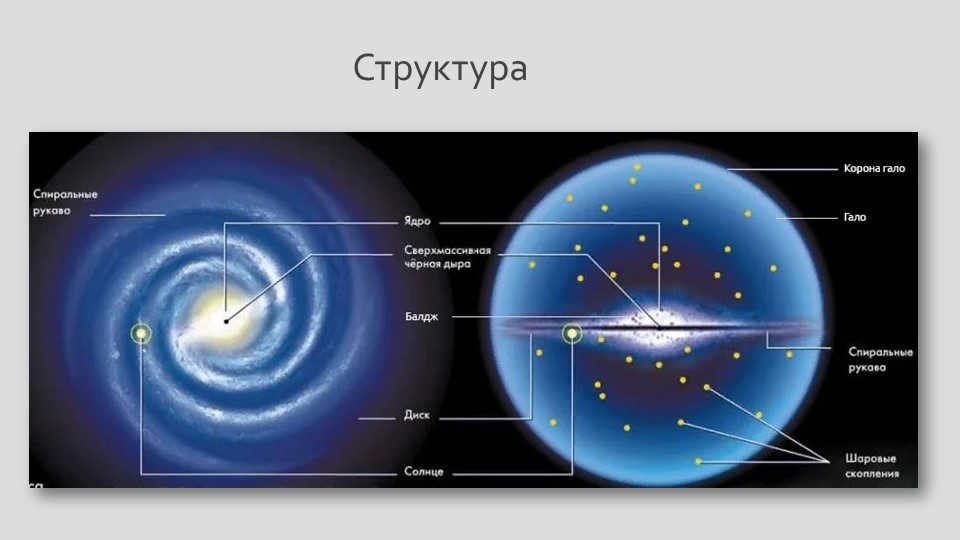
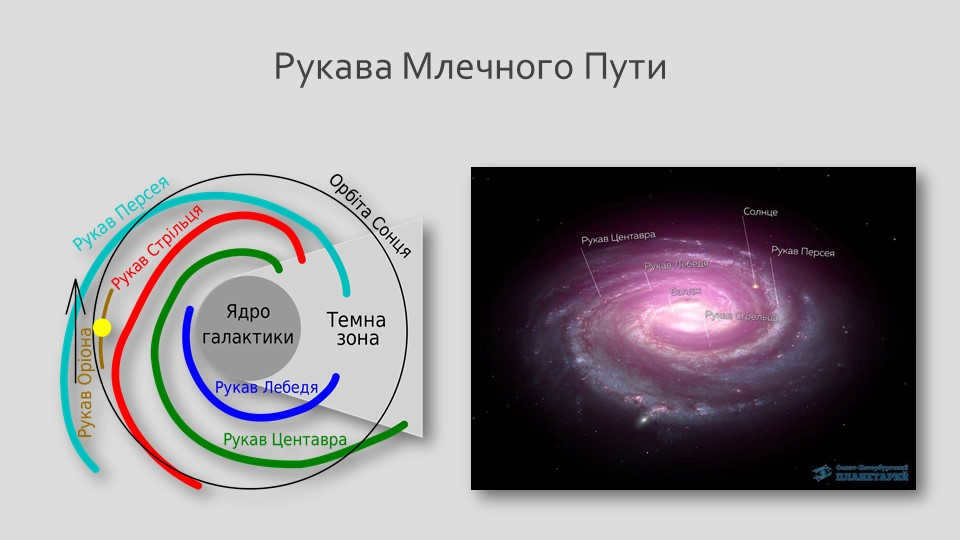
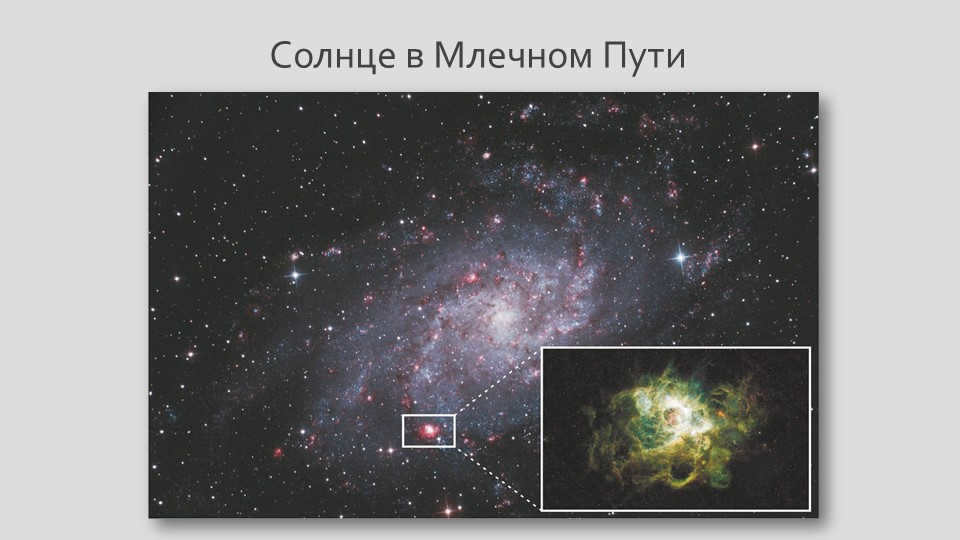

Slide 9 – Triangle Galaxy. With a mass approximately 5% of the Milky Way, it stands as the third largest galaxy in our local group. It exhibits a spiral structure, possesses its own satellites, and could potentially be a satellite of the Andromeda galaxy.
-The Large Magellanic Cloud. Despite only constituting 1% of the mass of the Milky Way, it ranks as the fourth largest galaxy in our local group. Situated in close proximity to the Milky Way, at a distance of less than 200,000 light-years, it is currently experiencing active star formation, as gas collapse leads to the emergence of new stars in the Universe.
-The Small Magellanic Cloud. These galaxies possess a mass ranging from 0.1% to 0.6% of the Milky Way’s mass, and all three exist as independent galaxies.
-Elliptical galaxies M32 and M110. While they may be companions of Andromeda, each of these galaxies contains over a billion stars and could potentially surpass galaxies 5, 6, and 7 in terms of mass.
Other Galaxies

Currently, there are extra cumulative discounts (ranging from 2% to 25%) that are accessible to 58,750 educational establishments. To determine the applicable discount for all staff members in your educational institution, please sign in to your personal Infoworks account.


Course for professional development
Using game techniques and teaching methods in the school’s physical geography curriculum.
We can apply an additional discount for your educational institution (the amount depends on how many of your colleagues have completed Infowork courses).
Currently, there are additional discounts available (ranging from 2% to 25%) for 58,750 educational institutions. To find out the specific discount that applies to all employees of your educational institution, please log in to your personal Infoworks account.


Professional development training
Current issues in geography teaching methodology under the implementation of FSES
We can apply an additional discount from your educational institution to this discount (the amount depends on the number of your colleagues who have completed Infoworks courses)
Currently, there are additional cumulative discounts available (ranging from 2% to 25%) for 58,750 educational institutions. To find out which discount is applicable to all staff members of your educational institution, please log in to your personal Infoworks account.




Utilizing game techniques to enhance geography learning in schools
Breakdown of the presentation through individual slides:

Slide 2: The beliefs of ancient civilizations regarding the Universe.
Slide 3: The celestial bodies surrounding the Sun.
Slide 4: Examining our planet, the Earth.
Slide 5: Exploring the vast realm of stars.
Slide 6: Embarking on a journey through the nocturnal sky.
Slide 7: Revolutionary scientists who reshaped our understanding of the world.
Slide 8: Advancing towards the distant stars.

Slide 4
Who were the ancient civilization that held the belief that the Earth was a flat surface supported by colossal elephants standing on a tortoise?


Slide 6: As per the beliefs of these individuals, the Cosmos is akin to a colossal mountain encircled by the vast expanse of the sea. Hovering above it, resembling an inverted bowl, is a celestial canopy adorned with countless shimmering stars.


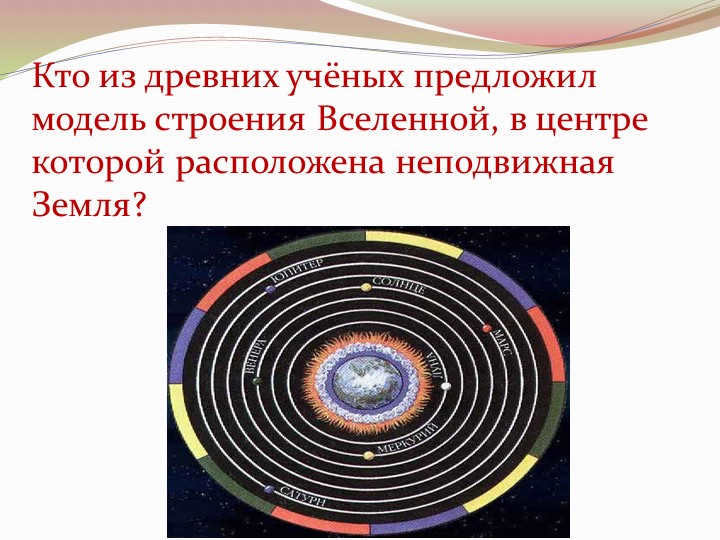
Slide number 10: Who among the ancient scientists put forward a concept of the universe’s structure, where the Earth remains stationary at its core?

The answer on slide 11 is about the famous Greek philosopher Aristotle. Aristotle believed that the Earth was stationary and located at the center of the Universe. He also proposed the idea of celestial spheres, suggesting that there were 8 of them revolving around the Earth.
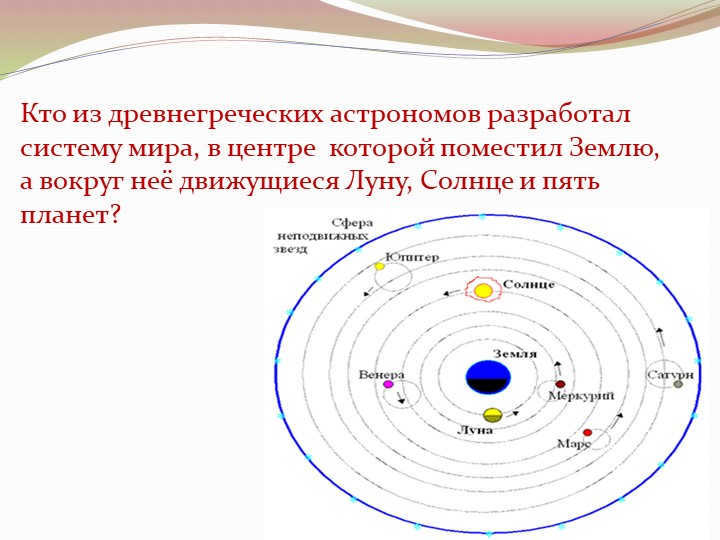
Slide 12: Who among the ancient Greek astronomers created a celestial model where the Earth was positioned at the core and the Moon, Sun, and five planets revolved around it?
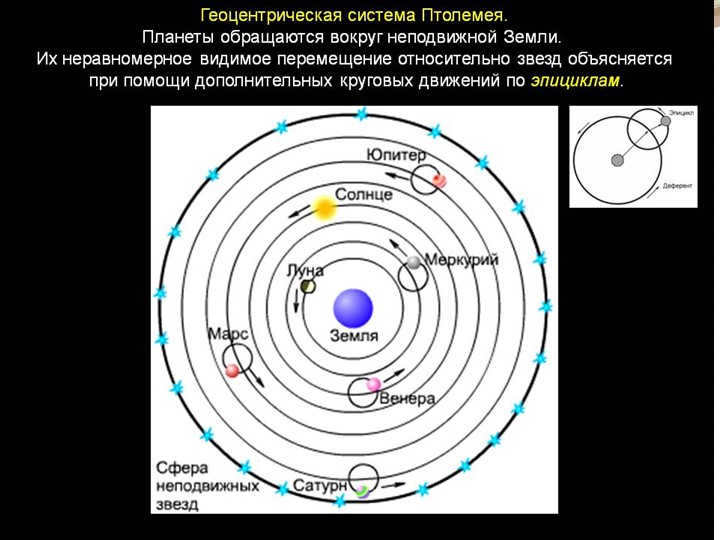
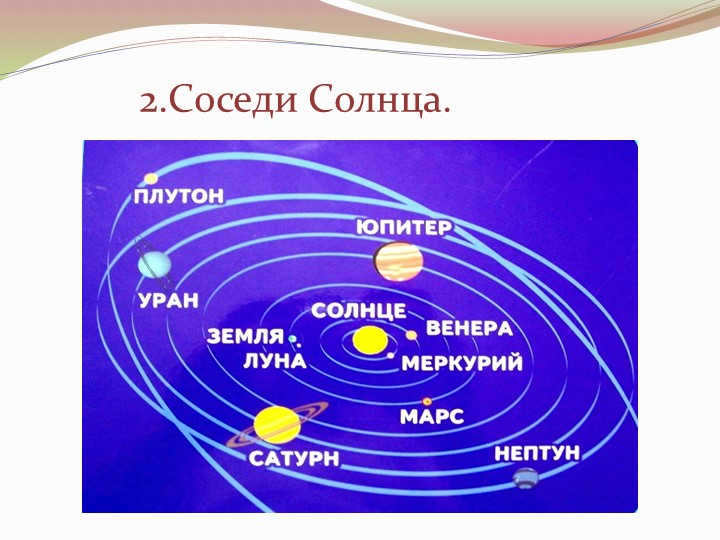


Answer: Venus is slightly smaller than Earth and its atmosphere is composed of carbon dioxide.
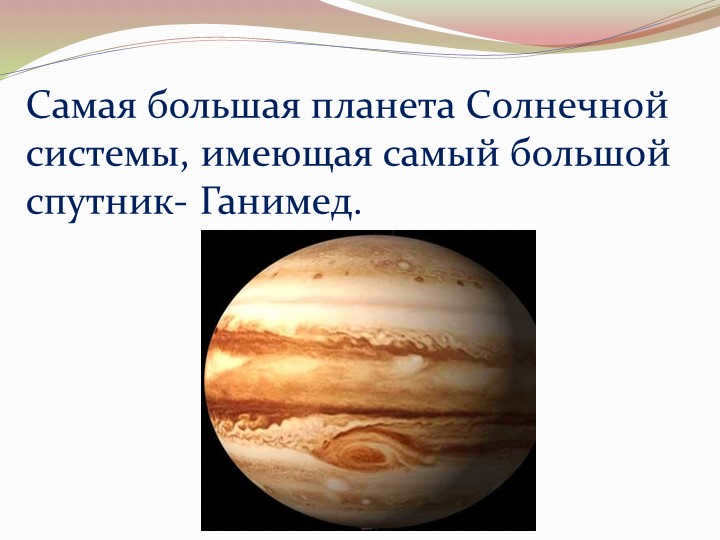
Answer: Jupiter, a colossal celestial body, spins at a remarkable pace, boasting an awe-inspiring display of distinct cloud layers that give the planet its iconic striped appearance.
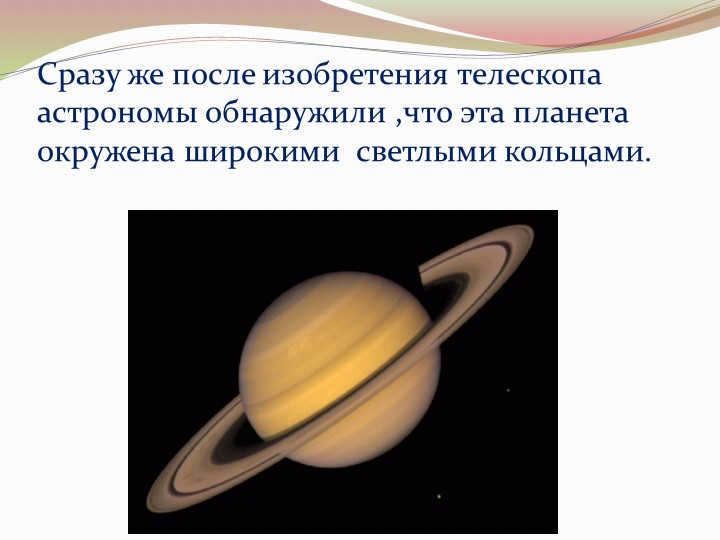

Right after the telescope was invented, astronomers made an amazing discovery – this planet is encircled by broad, pale-colored rings.
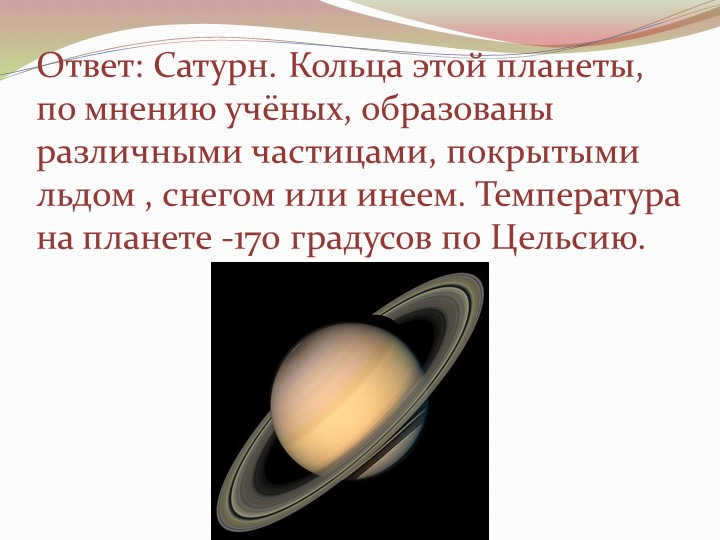
Answer: Saturn is responsible for the formation of its distinctive rings, which scientists believe are composed of a variety of particles coated in ice, snow, or frost. The planet’s frigid temperature reaches a bone-chilling -170 degrees Celsius.

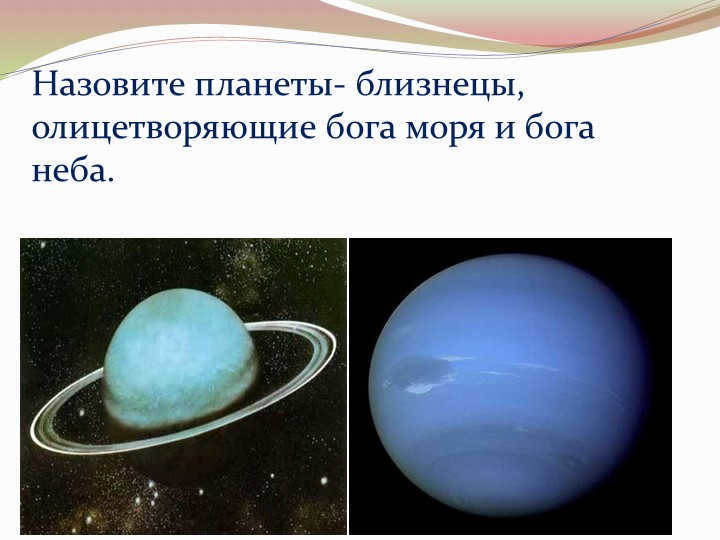
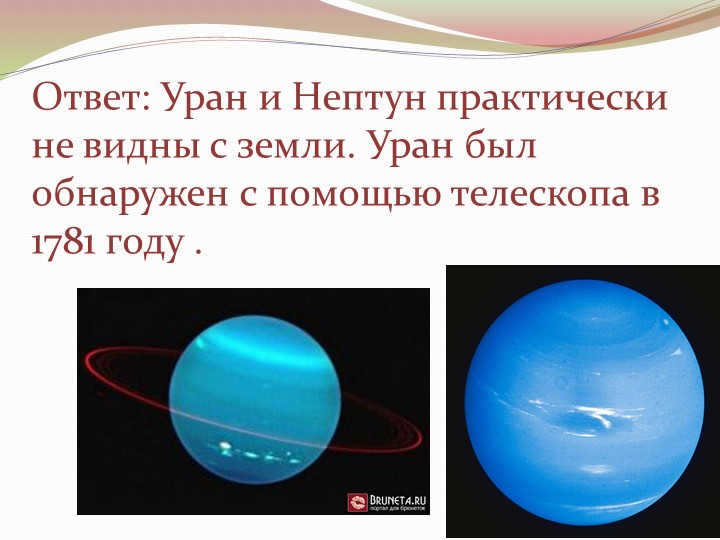
Answer: Uranus and Neptune can hardly be seen from Earth. The discovery of Uranus took place in 1781, with the help of a telescope.


Answer: The majority of the Earth’s surface is enveloped by water, and furthermore, the planet is encompassed by a protective layer of atmosphere.


Slide number 28: What is the direction of rotation of the Earth on its axis?



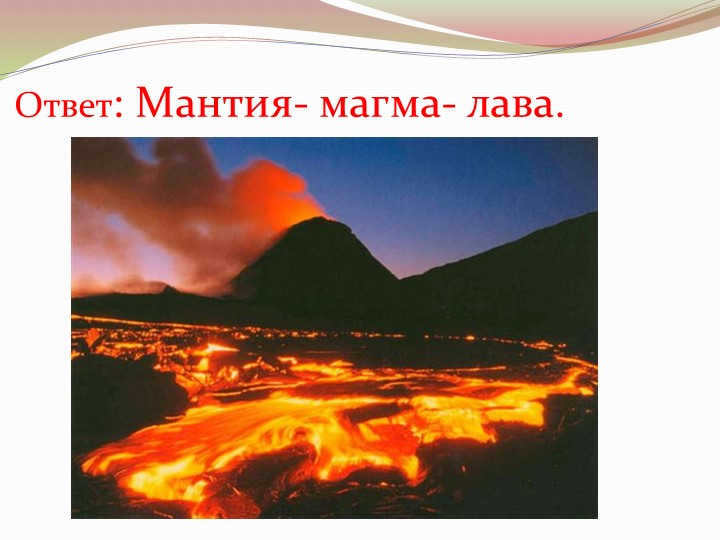



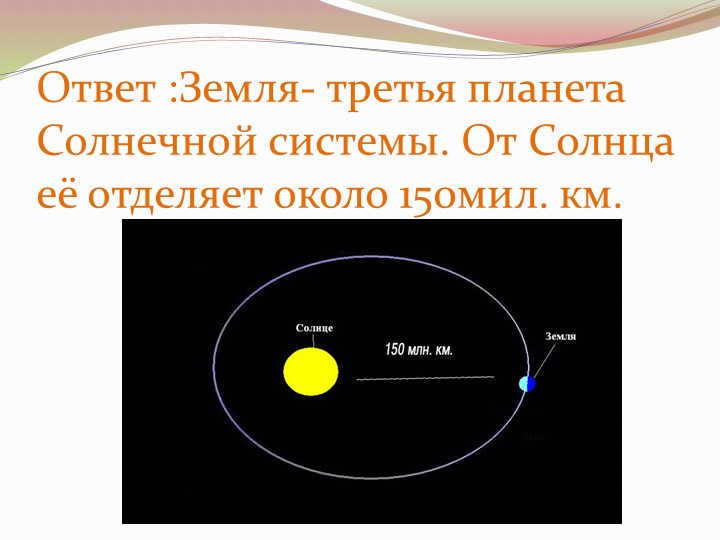









Galaxies are systems of stars that are bound together by the force of mutual attraction.


Did you know that a star that is always above the northern point of the horizon has been used for orienteering for a long time? It is known as the 48 slide star.

Slide 49 Response:
The North Star
The North Star, also known as Polaris, is always located in the northern hemisphere
and can be found in the constellation called “Ursa Major.”
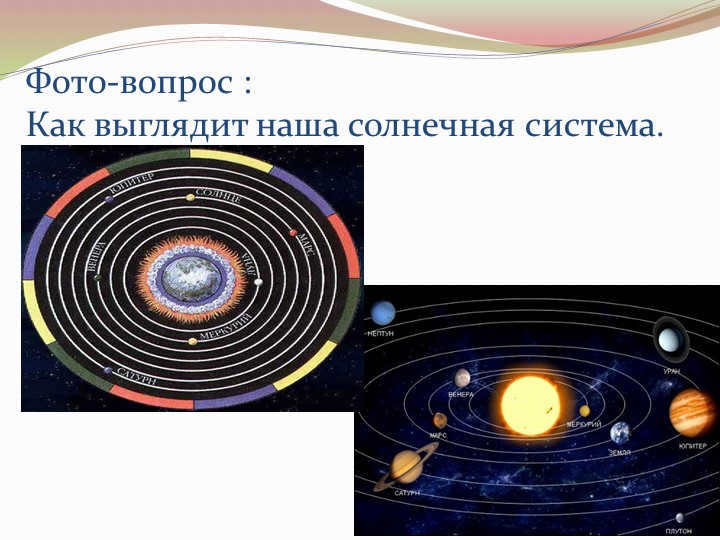
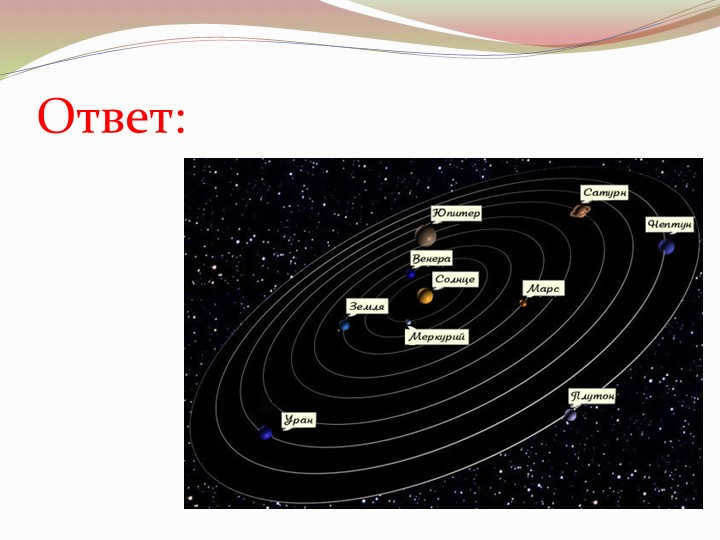


The 53rd slide features a Greek scientist who made a rather precise calculation of the Earth’s circumference and also coined the term “geography”.

55 slide The 16th-century astronomer from Poland was a brilliant mind who developed a groundbreaking model of the Universe. In his innovative theory, he positioned the Sun at the center, with all planets orbiting around it.
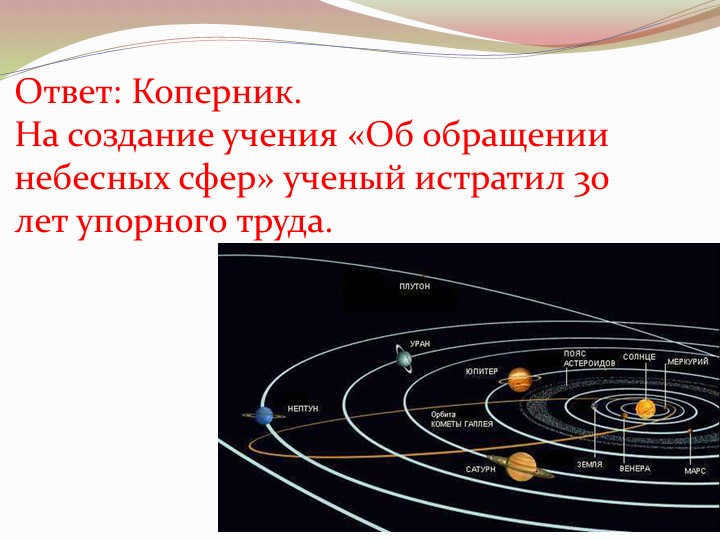

Slide 56 Solution: Copernicus.
The scientist dedicated 30 years of intense work to formulating the theory “On the revolution of the celestial spheres”.

Slide 57 features an Italian scientist from the 17th century. This individual was known for his groundbreaking work in observing celestial bodies. In fact, he was the first to utilize a telescope that he constructed himself.

Slide 58 provides the answer: it was Galileo Galilei who made the discovery of Jupiter’s satellites, which proved that celestial bodies do not only orbit around the Earth.


He was a renowned Italian scientist who gained recognition in 1600 for his groundbreaking theories on the nature of the universe. Despite facing persecution and being burned at the stake, he remained steadfast in his beliefs and refused to give up on his teachings.


60 slide Answer: Giordano Bruno held the belief that the Universe is unlimited in size and lacks a singular center.





On April 12, 1961, Yuri Gagarin became the first human to orbit the Earth.



Summary of the Document:
The educational game ‘Milky Way’ is designed to reinforce the concepts of natural history and geography covered in the lessons. It focuses on the topics of ‘Earth’s place in the Universe’ and ‘Planet Earth’.
The game presentation consists of various sections, including “Ancient Civilizations in the Universe”, “Celestial Neighbors of the Sun”, “Exploring Our Blue Planet”, “The Fascinating World of Stars”, and “Pioneering Scientists who Revolutionized Our Understanding”.
The quiz questions and tasks in the game are specifically designed to stimulate critical thinking, enhance memory skills, reinforce acquired knowledge, and broaden intellectual horizons.
Discover unique teaching materials for any lesson by selecting your subject (category), grade level, textbook, and topic:
There are currently 6,331,039 materials available in our database.
Additional Resources
Explore these courses that might interest you:
- Professional development course “Content and technologies of school geographical education in the conditions of realization of FSES”
- Professional development course “Adolescence – the most important phase of personality formation”
- Professional development course “Methodological aspects of implementation of the elective course “Basics of Geopolitics” of profile education in the conditions of implementation of FSES”
- Advanced training course “Introduction to network technologies”
- Formation of primary competences of using the territorial approach as a basis for geographical thinking with regard to FSES – a professional development course.
- Organization of project-research activity in the course of studying geography in the conditions of implementation of FSES – an advanced training course.
- Organization of marketing in tourism – an advanced training course.
- Management of Information Technology Resources – a professional retraining course.
- Pedagogy and methods of teaching geography in the conditions of realization of FSES – an advanced training course.
- Organization of transport services management system in tourism – a professional retraining course.
- International Monetary and Credit Relations – an advanced training course.
- Retraining course for professionals: “Managing remote information and reference service activities strategically”
Share your thoughts
If you think that the content infringes copyright or should be removed from the website for any other reason, you have the option to submit a complaint about the content. Remove content
Author of the content
- Duration on the website: 8 years and 2 months
- Followers: 0
- Total views: 3998
- Total content: 1
24 min.
29 minutes
57 minutes
Gift vouchers
The users who have uploaded the materials on the site are responsible for resolving any disputes regarding the materials and their content. Nevertheless, the site administration is willing to offer full assistance in resolving any matters concerning the site’s operation and content. In case you come across any unauthorized use of materials on this site, kindly notify the site administration via the provided feedback form.
All materials published on this website are either created by the website’s authors or submitted by users, and are provided for informational purposes only. The copyrights for these materials belong to their respective authors. Any partial or full reproduction of the website’s materials without the written permission of the website’s administration is strictly prohibited! The administration’s opinion may not necessarily align with the views of the authors.
This is a presentation for a 5th-grade lesson on the topic “We are in the Universe.” It is part of the teaching materials “Polar Star” edited by A.I. Alekseev.
Download:
Preview:
Captions for slides:
Knowledge Actualization Answer the following questions, discussing them with a partner: 1. How many planets are there in the Solar System? 2. Arrange the planets in order of their distance from the Sun. 3. Arrange the planets in order of size, from largest to smallest. 4. Why do you think only 4 planets are considered giant planets? 5. What is the name of the star that is closest to our planet? 6. Who was the first person to view our planet from space?
Discovering new knowledge 1. What is the universe and how is it structured? 2. What is the Milky Way? 3. What celestial objects constitute the solar system? 4. What does our planet look like? Can you answer these questions by referring to the images on page 19?
Take note of the definitions 1. The cosmos (universe) is the entirety of the existing world. It is boundless in both time and space. The universe consists of numerous star systems – galaxies. 2. The Milky Way is a galaxy containing over 100 billion stars, which includes our 3. Solar System. The solar system is comprised of 8 planets, planetary satellites, asteroids, comets, and space debris.
The universe is composed of multiple star systems. These star systems are referred to as galaxies. The solar system represents just a minuscule portion of the universe. Our galaxy is known as the Milky Way.
This is the appearance of our Milky Way galaxy.
Inside our galaxy, there are more than 100 billion stars. Positioned at its center is the Sun, a rotating, massive hot star. It emits light and heat.
Around the Sun, there are 8 planets that revolve around it, including our Earth. An orbit is the trajectory that a celestial body follows around the Sun.
The SOLAR SYSTEM consists of the Sun, the planets with their satellites, and other cosmic bodies such as asteroids and comets.
The distance between the Earth and the Sun is approximately 150 million kilometers, while the distance between the Earth and the Moon is 384 thousand kilometers.
There is a complex interconnection and adherence to cosmic laws between everything that occurs on the Sun, Earth, and other planets.
The heliocentric model of the world order, derived from the Greek word “helios” meaning the Sun, suggests that the Earth and other planets orbit around the Sun. This concept was introduced in the 16th century by the Polish astronomer Nicolaus Copernicus.
On the other hand, the geocentric model of the world order, originating from the Greek word “geo” referring to the Earth, proposes that the Sun and other planets revolve around the Earth. This idea was developed by Claudius Ptolemy between the 11th and 16th centuries.
The doctrine put forth by Copernicus asserted the boundlessness and infinitude of the universe. Additionally, Copernicus was the first to provide an accurate model of the solar system in astronomy, determining the relative distances of the planets from the sun and calculating their orbital periods. Ptolemy, on the other hand, incorrectly believed that the Earth was stationary and spherical, with the Sun revolving around it.
What is the structure of our planet?
The Earth takes the shape of a sphere, although it is slightly flattened at the poles. This shape is known as a geoid. The Earth has a surface area of 510 million km².
An oral account of our planet could follow this outline: 1. The shape of the Earth. 2. Surface area. 3. The ratio of water to land. 4. The continents. 5. Regions of the world.
From ancient times, the Earth has been divided into continents (6) and regions of the world. Historically, there have also been six regions of the world.
The Earth consists of natural shells: a solid shell called the lithosphere, a water shell known as the hydrosphere, an air shell referred to as the atmosphere, and a sphere of life known as the biosphere.
All of these shells interact with each other to form the Earth’s geographic envelope.
THE EARTH IS THE ONLY KNOWN PLANET WHERE LIFE EXISTS!
Reflect on your lesson. What tasks did you set for yourself at the start of the lesson? What new concepts did you learn today? What celestial bodies make up the Solar System? What continents are you familiar with? What regions of the world do you know?
Reflection 1. What knowledge did you acquire during the study of the topic “We in the Universe”? 2. What aspects remained ambiguous to you? 3. How challenging was it for you to complete the assignments?
Homework 1. Memorize the definitions recorded in your notebook. 2. Complete task number 4 on page 21.
About the topic: methodological advancements, presentations, and notes
Presentation for the Art class in 8th grade, focusing on “Frozen Music”.
This presentation has been created specifically for the Art lesson in the 8th grade, following the curriculum designed by G.P.Sergeyeva, I.E.Kashekova, and E.D.Kritskaya.
Presentation for the lesson on “Optical Illusions” in the 9th grade, as part of the “Spotlight” curriculum.
This presentation showcases a collection of optical illusions that can be used for the 3D lesson in the 9th grade, within the “English in Focus” program.

Introduction to the class about “Suffix Meanings”, 5th grade
This presentation is a companion to the Russian language lesson on the subject of “Suffix Meanings” and is intended for 5th grade students enrolled in the “School 2100” educational program.

Presentation about “Your room” for 7th graders
This presentation is designed for an extracurricular activity focusing on the subject of “Your room” for 7th grade students. The content of the presentation is presented in a vibrant and visually appealing manner.

Presentation for the 7th-grade lesson on the topic “Spelling of adverbs”
The presentation for this lesson serves to engage students visually and aid in the delivery of educational content.
Presentation for 5th-grade lessons on the topic “Word formation” based on S.I. Lvova’s textbook. Includes supplementary material for increased motivation and reinforcement.
In this presentation, I have included additional materials to enhance student motivation, reinforce the spelling of roots with alternation, practice vocabulary words, and address the use of the letter o-e after the hiss.








